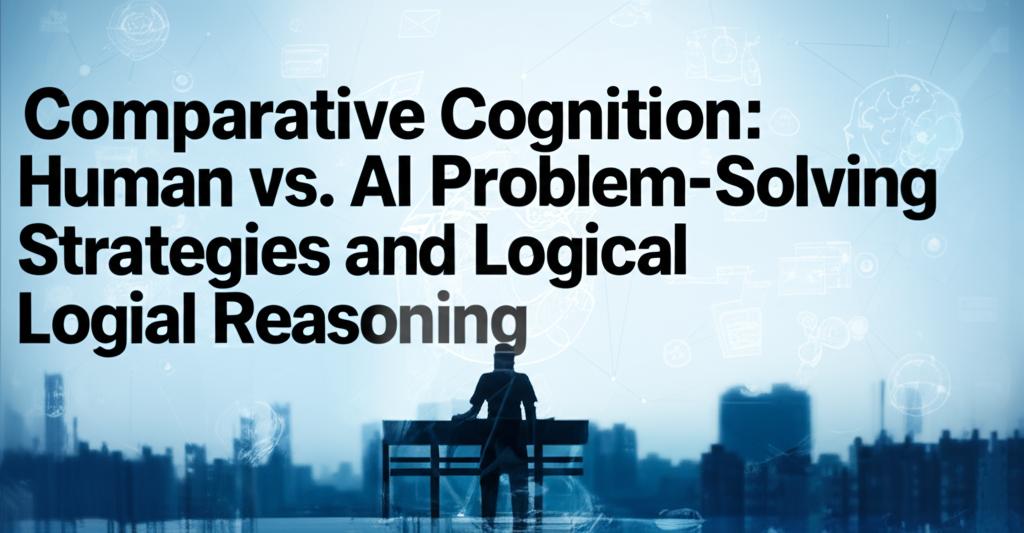The landscape of problem-solving and logical reasoning is undergoing a significant transformation with the rapid advancements in Artificial Intelligence (AI). While human cognition has long been the benchmark for complex problem-solving, AI is increasingly demonstrating sophisticated capabilities, prompting a closer look at how these two forms of intelligence compare, contrast, and potentially complement each other.
Core Differences in Problem-Solving ApproachesHumans approach problem-solving with a multifaceted toolkit that includes intuition, creativity, emotional intelligence, and the ability to adapt to novel and ambiguous situations. We excel at learning from limited data and experiences, generalizing across various contexts, and applying abstract thinking. Human problem-solving is often guided by insight and can navigate uncertainty through flexible thinking and adaptation.
AI, on the other hand, excels in structured environments where tasks are clearly defined. Algorithms like reinforcement learning enable AI to analyze vast datasets rapidly and identify optimal solutions. AI's strength lies in its processing speed, precision, and ability to handle large volumes of information without fatigue or emotional bias. However, AI's outputs are constrained by the data it was trained on, and it can struggle with unfamiliar scenarios or tasks requiring genuine creativity and emotional understanding.
Logical Reasoning: Human vs. MachineHuman reasoning is a complex interplay of logic, experience, memory, and even emotion. We can make inferences, draw conclusions, and understand context and nuances. While prone to cognitive biases, human reasoning is highly adaptable and capable of creative leaps.
AI's reasoning is fundamentally based on logic and data. It can process massive amounts of information and identify patterns to make predictions or decisions. Recent advancements, particularly in Large Language Models (LLMs), have introduced "chain-of-thought" (CoT) reasoning, where AI models break down complex problems into sequential steps, mimicking a more human-like thought process. This has improved accuracy and transparency in AI's decision-making. However, AI still lacks genuine comprehension of context and can misinterpret subtleties like idioms or sarcasm. While AI can be programmed to simulate empathy, it doesn't possess genuine emotional understanding, which can be crucial in many reasoning scenarios.
Key Comparative Aspects:- Learning Process: Humans learn through experiences, observation, social interaction, and cognitive processes, allowing for adaptation from relatively small amounts of data. AI learns through algorithms and typically requires large datasets.
- Creativity & Innovation: Humans possess the ability for genuine creative and innovative thought, driven by emotions, experiences, and abstract thinking. While AI can generate novel content based on patterns in its training data, it lacks true, independent creativity.
- Adaptability: Humans are highly adaptable and can thrive in unpredictable environments, integrating diverse sensory information. AI's adaptability is generally limited to its training data and pre-programmed responses, struggling with entirely new situations.
- Emotional Intelligence: Humans have a deep emotional awareness and empathy, which significantly influences decision-making and interpersonal interactions. AI currently lacks genuine emotional understanding.
- Speed and Scalability: AI can process information and perform tasks at speeds and scales far beyond human capabilities, especially in data-intensive scenarios.
- Bias: Human reasoning can be affected by cognitive biases. AI can also inherit biases from its training data, which can lead to skewed or unfair outcomes if not carefully managed. Interestingly, some studies suggest that while AI can avoid certain human biases like base-rate neglect, it can exhibit others like overconfidence.
- Transparency: While human thought processes can be opaque, advancements in AI, such as CoT prompting, are making AI's reasoning more transparent and auditable. This is crucial for building trust and ensuring ethical deployment, especially in sensitive sectors.
Research indicates a move towards "reasoning AI," where systems are designed to integrate elements of human-like reasoning, including causality and contextuality. The aim is not necessarily for AI to replace human intelligence but to complement and augment it.
AI excels at handling routine, data-driven tasks, freeing up human intellect for more strategic, creative, and ethically complex challenges. The future likely involves a synergistic collaboration where AI's computational power and data analysis capabilities are combined with human creativity, intuition, and ethical oversight.
However, concerns remain regarding over-reliance on AI. Excessive delegation of cognitive tasks to AI could potentially diminish human critical thinking, problem-solving skills, and decision-making autonomy. Therefore, a balanced approach is essential, leveraging AI's strengths while actively fostering and preserving human cognitive abilities.
In educational contexts, AI tools offer potential for personalized learning and support in understanding complex problems. Yet, the importance of human interaction and guidance in developing deep cognitive and emotional skills remains paramount.
As AI continues to evolve, the dialogue about its capabilities versus human cognition will undoubtedly continue. Understanding these differences and similarities is crucial for harnessing the power of AI responsibly and ensuring that technological advancements serve to enhance, rather than diminish, human potential.

